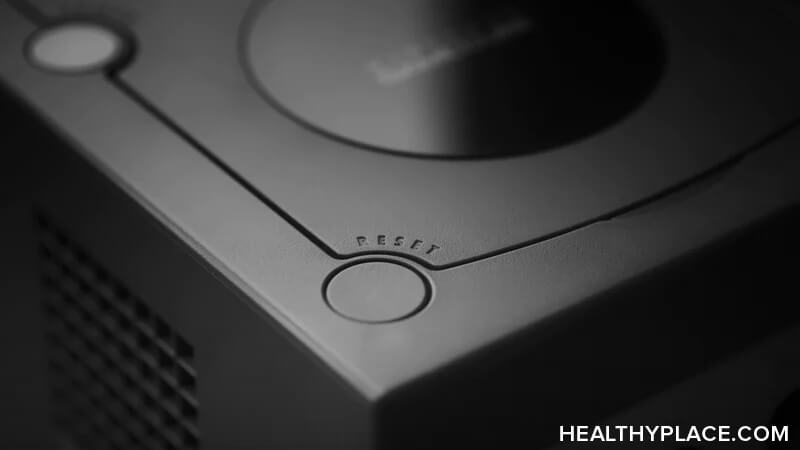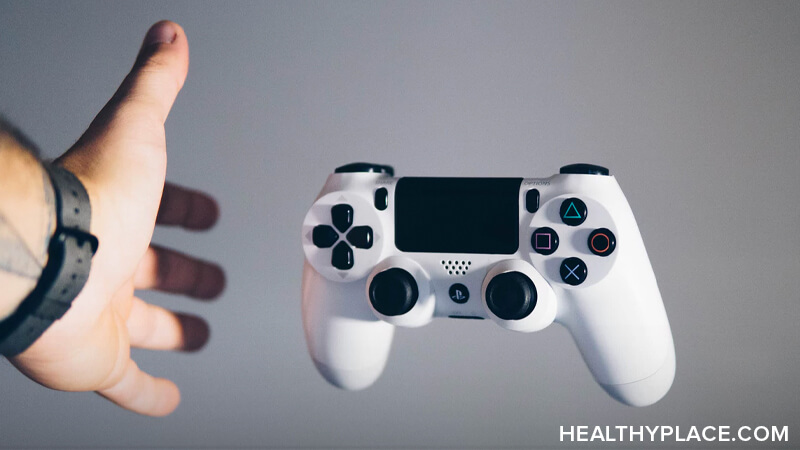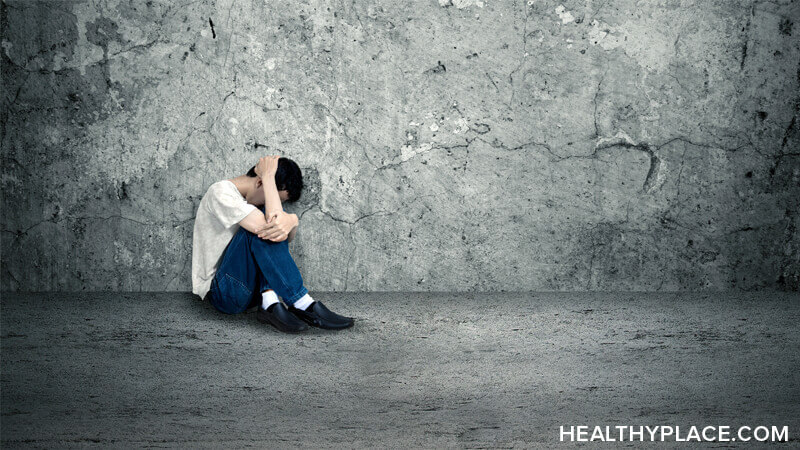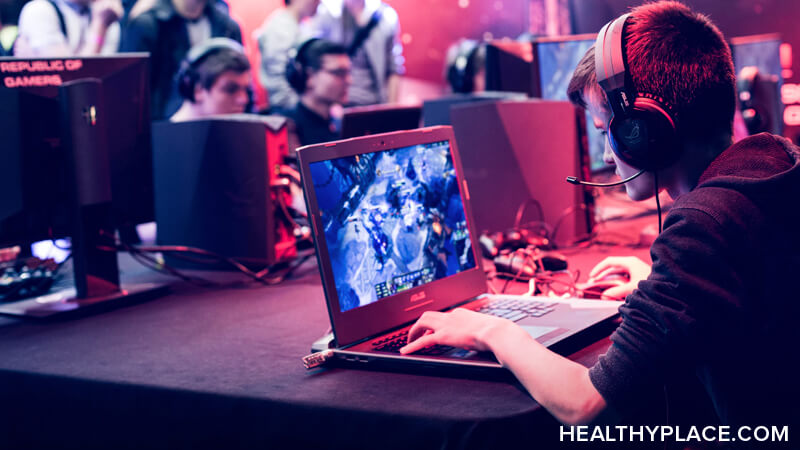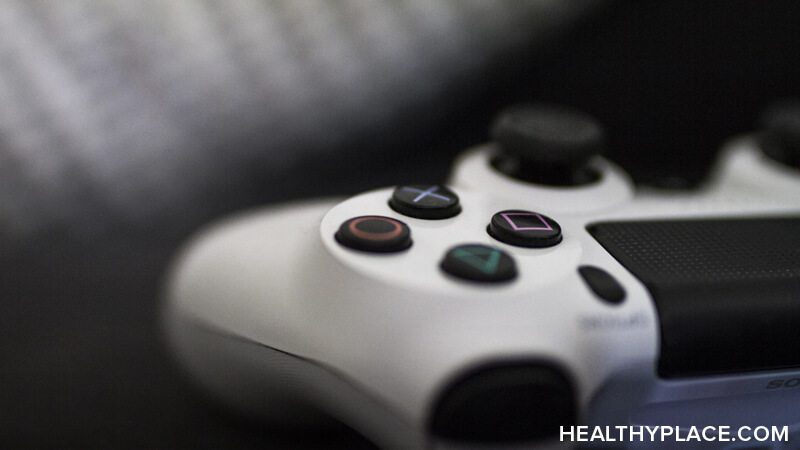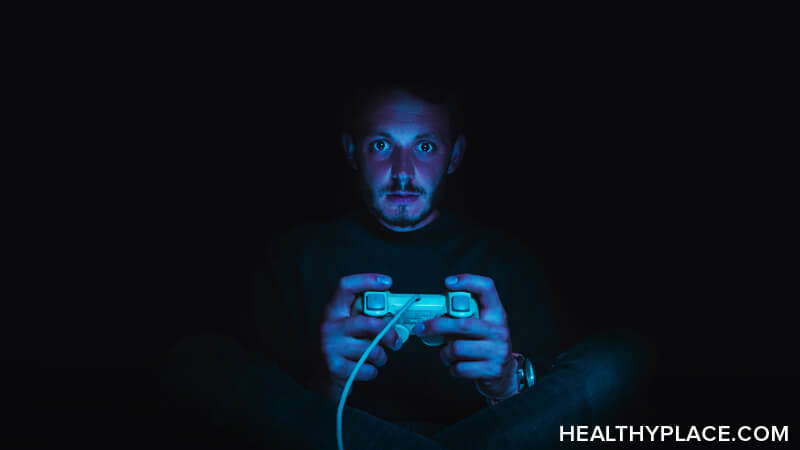By Kym A. Kanaly, MD
Departments of Obstetrics and Gynecology, St. Luke's-Roosevelt Hospital
And Jennifer R. Berman, MD
Center, and Urology, UCLA Medical Center
Abstract: Depression often co-exists with sexual dysfunction, and the medical treatment of depression can further worsen sexual symptoms or cause de-novo sexual dysfunction in a person who did not experience it prior to treatment. There are many drugs that can adversely affect sexual response. Among antidepressants, this effect is commonly observed with selective serotonin reuptake inhibitors (SSRI). Numerous strategies for the treatment of SSRI-related sexual dysfunction have been studied, including: awaiting spontaneous remission of sexual dysfunction; reducing the dose of medication; taking a "drug holiday"; adding another drug to help reverse sexual symptoms; changing antidepressants; or initially starting with a different antidepressant that is known to have fewer or no sexual side effects. Overall, it is important to address sexual health when caring for a patient in order to improve drug compliance and the patient's well being.
Female sexual dysfunction is highly prevalent, affecting 43% of American women. [1] Based on data from the National Health and Social Life Survey: [1] a third of women lack sexual interest, [2] nearly a fourth do not experience orgasm, [3] approximately 20% report lubrication difficulties, and [4] 20% find sex not pleasurable. Female sexual dysfunction is a multifactorial problem combining biological, psychological, and interpersonal causes.[2]
Relationship Between Depression and Sexual Dysfunction: Depression is a common disorder with a prevalence of 6-11.8% in women.[3] Unipolar depression is twice as common in women as men. A core symptom of depression is anhedonia, which is defined as markedly diminished interest or pleasure in all, or almost all activities. Anhedonia includes loss of libido. In one study, it was found that 70% of depressed patients had a loss of sexual interest while not on medication, and they reported that the severity of this loss of interest was worse than the other symptoms of depression. [4] Despite these important findings, several myths exist about sexual dysfunction and depression. [5] One myth is that depressed patients do not care about their sexual function. In a door-to-door epidemiologic survey in the United Kingdom of over 6,000 people, 70% reported that having a good sex life was fairly or very important to them. [6] Among the 1,140-person subsample of people reporting depression, 75% reported that having a good sex life was fairly or very important to them. These findings suggest that depressed patients value sexual health as much as non-depressed patients.
Another myth is that most patients will continue to take their medications even if they are experiencing sexual dysfunction, as long as the drug is effectively treating their depression. In a study of sexual dysfunction caused by clomipramine (Anafranil), an antidepressant, approximately 96% of patients developed difficulty in achieving orgasm. [7] It was later discovered that some patients were secretly reducing their dose of clomipramine in order to regain sexual function.
A third myth is that patients will spontaneously report sexual dysfunction to their physician. Patients often do not spontaneously report sexual dysfunction to their doctors because of the personal nature of sexual behavior or because of fear, shame, or ignorance. [8] Gender may also influence spontaneous reporting of sexual dysfunction, with men more likely to report problems than women. Physicians may also hesitate to ask patients directly because of their own discomfort with the topic; lack of knowledge about sexual dysfunction; wishing to avoid appearing intrusive or seductive; and/or feeling that they do not have enough time to address a complex issue such as sexual dysfunction. In order to fully care for a patient, it is necessary to obtain a sexual history. In the previously mentioned study regarding clomipramine, it was shown to be essential to ask patients directly about sexual function. [7] The percentage of patients with sexual dysfunction elicited by questionnaire was 36% and the percentage of patients elicited by a direct interview was 96%.
The fourth and final myth is that all antidepressants cause sexual dysfunction at the same rate. In a prospective multicenter study of 1,022 outpatients, the overall incidence of sexual dysfunction was 59.1% when all antidepressants were considered. [9] The incidence of any type of sexual dysfunction was different among the different drugs: [1]fluoxetine (Prozac, Elli Lily & Company, Indianapolis, IN) 57.7%, [2](Zoloft, Pfizer, New York, NY) 62.9%, [3]fluvoxamine (Luvox, Solvay, Marietta, GA) 62.3%, [4]paroxetine (Paxil, SmithKline Beecham, Philadelphia, PA) 70.7%, [5]citalopram (Celexa, Forest, St. Louis, MO) 72.7%, [6]venlafaxine (Effexor, Wyeth-Ayerst, Philadelphia, PA) 67.3%, [7] mirtazapine (Remeron, Organon, West Orange, NJ) 24.4%, [8]nefazodone (Serzone, Bristol-Meyers Squibb, Princeton, NJ) 8%, [9] amineptine (6.9%), [10] moclobemide (3.9%). The incidence of sexual dysfunction is high with SSRIs (medications 1-5) and venlafaxine, which is a serotonin-norepinephrine reuptake inhibitor (SNRI).
Mechanism of SSRI-Induced Sexual Dysfunction: SSRIs can be associated with most forms of sexual dysfunction, but the main effects of SSRIs involve sexual arousal, orgasm, and libido. [10] With sexual stimulation and arousal, the erectile tissue of the clitoris and the smooth muscle of the vaginal wall engorge. The increased blood flow to the vagina triggers a process called transudation, providing lubrication. SSRIs cause sexual dysfunction by inhibiting the production of nitric oxide, which is the main mediator of both the male and female sexual arousal response. [11] (figure 1) This leads to complaints of vaginal dryness, diminished genital sensation, and often times orgasmic difficulty.
The effect of SSRIs on libido may be the result of multiple factors that impact the central nervous system, especially the mesolimbic system. [12] Dopamine is believed to be one of the neurotransmitters that positively affect libido. Selective serotonin reuptake blockade, as seen with SSRIs, has been implicated in reducing dopamine activity via the serotonin-2 (5-HT2) receptor. SSRIs have also been associated with increased prolactin levels, which may have effects on the central nervous system, resulting in decreased libido.
Treatment of SSRI-Induced Sexual Dysfunction: Many strategies have been suggested in regards to managing SSRI-induced sexual dysfunction including: [1] awaiting spontaneous remission of sexual dysfunction, [2] reduction of dose, [3] "drug holiday",[4] addition of a pharmacologic antidote, [5] switching antidepressants, and [6] starting with an antidepressant with fewer or no sexual side effects. Whichever strategy is used, the treatment must be individualized.
Spontaneous Remission of Sexual Side Effects: Some patients report that sexual side effects improve over time. [13] In this limited data, it seems as though improvement of sexual side effects occurs when the initial complaints are mild and associated with delayed orgasm, rather than desire or arousal disorders. In a series of 156 patients with SSRI-related sexual side effects, only 19% reported moderate-to-complete improvement of side effects at 4 to 6 months. [14] Evidence from a number of studies suggests that treatment for an episode of depression must last a minimum of 3 months after acute stabilization, and should probably last 6 to 9 months. [15] Chronic major depressive disorder usually has an onset in early to midlife, and the full syndrome of major depression persists for 2 years or longer. The basic principles of treatment of chronic depression involve longer treatment and higher doses than are usually necessary for an acute event of depression. [16] In light of the small percentage of spontaneous remission of sexual side effects and the necessity of antidepressant therapy from a minimum of 6 to 9 months up to a lifetime, different strategies may prove more effective in maintaining sexual health.
Decreased Dosage Regimens: If waiting is unacceptable or ineffective, decreasing the daily dosage may significantly reduce or resolve the sexual side effects. [17] SSRIs have a flat dose-response curve and this effect may allow enough room to decrease the dosage enough to eliminate the side effects, but still maintain the antidepressant efficacy. It has been shown that a fluoxetine dose of 5-10 mg/day can be as effective as the more usual dose of 20 mg/day in improving depressive symptoms. If this strategy is implemented, the treating physician must be alert to any signs of recurrent depression and promptly resume a higher dose if necessary. If the patient's complaint is delayed orgasm or anorgasmia, the patient can be instructed to time intercourse either soon before or after taking their SSRI dosage. This timing allows for the serum drug level to be at its nadir during intercourse, hopefully decreasing sexual side effects.
Drug Holidays: A drug holiday is taking a 2-day break from medication in order to lessen sexual side effects and plan intercourse during this period of time. This idea first appeared when patients informed their physicians that they had tried stopping their medication for a day or 2 and that this resulted in an improvement of sexual functioning without a worsening of depressive symptoms. [5] Due to this finding, a study was performed to determine whether drug holidays were effective strategies for treating SSRI-induced sexual dysfunction.[18] Thirty patients were studied while taking fluoxetine, paroxetine, and sertraline (10 patients in each arm). All 30 patients had reported normal sexual functioning prior to starting the SSRI and only had sexual dysfunction secondary to SSRIs. Patients took their doses Sunday through Thursday and skipped their doses Friday and Saturday. Each of the 30 patients performed the drug holiday four times. Improved sexual function for at least 2 of the 4 weekends was noted by the patients who were taking sertraline and paroxetine, the 2 SSRIs with relatively short half-lives. The patients on fluoxetine did not note improved sexual function, probably secondary to the longer half-life of this particular drug. All three groups denied worsening of depressive symptoms.
Pharmacologic Antidotes: Although not approved by the FDA for this particular use, numerous pharmacologic agents have been successfully used for treatment of sexual dysfunction caused by SSRIs. However, most of the information obtained regarding these antidotes has come from anecdotal case reports and not double-blind comparative studies. The treatments that will be discussed include amantadine, buspirone, bupropion, psychostimulants, sildenafil, yohimbine, postsynaptic serotonin antagonists and gingko biloba.
Amantadine (Symmetrel, Endo Labs, Chadds Ford, PA) is a dopaminergic agent used in the treatment of movement disorders. It is thought to reverse SSRI-related sexual side effects by causing increased dopamine availability. [12] Doses of amantadine typically used are 75 to 100 mg BID or TID regularly or 100 to 400 mg as needed for at least 2 days before sexual activity. [19] Side effects include possible sedation and potential psychosis.
Buspirone (Buspar, Bristol-Myers Squibb, Princeton, NJ) is an anxiolytic that has been shown in case reports to reverse sexual side effects. There have been also at least two placebo-controlled studies showing that buspirone improves sexual function: one more effectively than the placebo, the other equally effective. In the placebo-controlled trial, which showed a significant difference in sexual response between buspirone and placebo, up to 59% of patients taking buspirone reported improvement, compared with up to 30% of patients on placebo during 4 weeks of treatment. [20] The other study is a randomized, placebo-controlled study involving 57 women who reported deterioration in sexual function during their treatment with fluoxetine that was not present before the initiation of the SSRI. [21] Nineteen women were placed on buspirone, 18 on amantadine, and 20 on placebo. All treatment groups experienced improved overall sexual function, including mood, energy, interest/desire, lubrication, orgasm and pleasure. There were no statistically significant differences among the three groups. Several mechanisms have been proposed to explain the reduction of SSRI-induced sexual side effects with buspirone. These mechanisms include [1] partial agonist effects at serotonin-1A receptors, [2] suppression of SSRI-induced elevation of prolactin, [3] dopaminergic effect, [4] the major metabolite of buspirone is an a2 antagonist which has been shown to facilitate sexual behavior in animals. [5]
Bupropion (Wellbutrin, Glaxo Wellcome, Research Triangle Park, NC) is an antidepressant that is hypothesized to have norephinephrine- and dopamine-enhancing properties. [12] In one study, the changes in sexual functioning and depressive symptoms were examined as patients transitioned from SSRIs to bupropion over an 8-week course. [22] The study included 11 adults (8 women and 3 men) who experienced a therapeutic response in regards to their depression, but also complained of sexual side effects on their SSRIs (paroxetine, sertraline, fluoxetine, and the SNRI venlaxafine).
Depression and sexual function were assessed at baseline, 2 weeks after bupropion SR was added (combined treatment), 2 weeks after the taper of the SSRI was initiated and completed, and then after 4 weeks of only bupropion SR therapy. Five patients withdrew during the study secondary to side effects. The conclusion showed that bupropion SR was an effective treatment for depression, and also alleviated overall SSRI-induced sexual dysfunction, particularly libido and orgasm problems; however, some patients cannot tolerate the new side effects.
In a randomized, double-blind, placebo-controlled, parallel-group study, bupropion SR was compared with a placebo in treating SSRI-induced sexual function. [23] Thirty-one adults were enrolled in the study and only one patient dropped out secondary to side effects. The results showed no significant differences between the two treatments related to depression, sexual dysfunction, or side effects.
Clinicians must be aware of the potential drug interactions when combining SSRIs and bupropion. [5] Numerous case reports have documented serious side effects such as tremor, anxiety, and panic attacks, mild clonic jerks and bradykinesia, delirium, and seizures. Fluoxetine can inhibit both the cytochrome P450 3A4 and CYP2D6 hepatic isoenzymes that are believed to be responsible for the metabolism of bupropion and one of its major metabolites, hydroxybupropion.
Stimulants, such as methylphenidate, dextroamphetamine, and pemoline have been shown in case reports to be effective in alleviating SSRI-induced sexual dysfunction. [5,12] Some reports recommend use one hour prior to sexual activity, while others report adding the stimulant to the medication regimen. Low dosages may enhance orgasmic function; however, higher doses have been reported to have the opposite effect. Usual precautions when prescribing stimulants should be considered, such as abuse potential; insomnia if late-day dosing is used; cardiovascular effects; and the possibility of increasing sympathetic tone, which may impair erection in men and pelvic engorgement in women.
Gingko Biloba Extract, an extract from the leaf of the Chinese gingko tree that is sold over-the-counter, has been shown to increase blood flow. [5,12] In one non-blind study, the rate of response ranged from 46% with fluoxetine to 100% with paroxetine and sertraline. [25] Effective doses ranged from 60 mg/day to 240 mg/day. Common side effects include gastrointestinal disturbances, flatulence, and headache, and it can alter blood clotting time.
Yohimbine, a presynaptic a2-blocker, has been reported as effective in treating decreased libido and anorgasmia caused by SSRIs. [26] The mechanism of action is unclear, but may involve the stimulation of adrenergic outflow with increased pelvic blood flow. Effective doses range from 5.4 mg to 16.2 mg taken as needed 1 to 4 hours before sexual intercourse. Common side effects include nausea, anxiety, insomnia, urinary urgency, and sweating.
Postsynaptic Serotonin Antagonists, including nefazodone and mirtazapine, have minimal if any effect on sexual functioning. [12] These antidepressants are reasonable first-line agents for treating depression, and also have been shown to improve sexual side effects of SSRIs when used as antidotes.
Mirtazapine works as a potent 5-HT2 and 5-HT3 antagonist, and also has a2-antagonistic properties. Sexual side effects are believed to be mediated through 5-HT2 stimulation. Therefore, mirtazapine's antagonistic action should improve or resolve sexual side effects. Several case reports have described patients receiving mirtazapine while on SSRI therapy. [24] Sexual functioning returned to baseline or improved for all patients. Side effects include sedation, irritability, muscle soreness, stiffness, and weight gain.
Of interest, nefazadone has been shown to decrease the frequency of sexual obsessions as seen with nonparaphilic compulsive sexual behavior, but does not produce the undesired sexual side effects caused by SSRI treatment. [27] The term nonparaphilic compulsive sexual behavior defines the disorder in which an individual has intense sexually arousing fantasies, urge, and associated sexual behaviors that cause significant distress or impairment.
Sildenafil (Viagra, Pfizer, New York, NY) works as a competitive inhibitor of cGMP-specific phosphodiesterase (PDE) type 5. PDE5 inhibitors are associated with increased nitric oxide production, resulting in smooth muscle relaxation and increased blood flow to the genital tissues. Sildenafil is currently approved only for the treatment of male erectile dysfunction, but has been proven in many studies to reverse sexual side effects of SSRIs. [12] It is also proven effective in the treatment of female sexual dysfunction. [28,29] Sildenafil can be taken as needed 30 to 60 minutes prior to sexual activity. The usual doses range from 50 to 100 mg.
The most obvious mechanism of action is the increase of blood flow to the clitoris and vagina. These positive effects on arousal and sensation can secondarily improve sexual motivation or libido. Common side effects are headaches, facial flushing, nasal congestion, and indigestion. The usual precautionary measures should be considered when using sildenafil, which includes the contraindication to using nitrates, including recreational use of amyl nitrate. Sildenafil and nitrates can cause a fatal drop in blood pressure.
Eros-CTD or clitoral therapy device developed by UroMetrics, Inc. became the first treatment for female sexual dysfunction approved by the FDA in May 2000. [2] Eros-CTD is a small pump with a tiny plastic cup attachment that fits over the clitoris and surrounding tissue. It provides gentle suction in efforts to enhance arousal and to engorge the clitoris and labia by pulling blood into the area. Although no studies have yet been done on the effects of Eros-CTD on SSRI-induced sexual dysfunction, it may prove to be effective in the same way that sildenafil increases blood flow to genital tissues and thus reduces sexual side effects.
Switching Antidepressants: Several studies have shown that switching to an antidepressant associated with fewer sexual side effects may be an effective strategy for some patients. Some studies suggest that a switch to nefazodone, bupropion or mirtazapine improves sexual dysfunction, but does not decrease the antidepressant effects. [5,9,12] However, some studies have reported loss of antidepressant effects, plus new side effects.
In one study, patients on fluoxetine treatment with sexual dysfunction were switched to bupropion. 64% reported a much improved sexual functioning; however, 36% of the patients discontinued bupropion because they did not get an antidepressant effect and they developed new side effects, such as agitation. [30] Another study involved switching patients on sertraline, an SSRI, to either nefazodone or back to sertraline. [31] Patients went through a one-week washout period (no medication), then were randomly assigned to double-blind treatment with either nefazodone or sertraline.
In terms of discontinuation rates with nefazodone and sertraline respectively, 12% and 26% discontinued because of adverse effects and 10% and 3% discontinued because of lack of antidepressant effects. Twenty-six percent of the nefazadone-treated patients had a reemergence of sexual dysfunction, compared to 76% in the sertraline-treated group, which is statistically significant.
Regarding mirtazapine, a study was conducted in which 19 patients (12 women and 7 men) with SSRI-induced sexual dysfunction were switched to mirtazapine. [32] 58% of patients had a return of normal sexual functioning, and 11% reported significant improvement in sexual functioning. All patients maintained their antidepressant response. From the initial group of 21 patients that met criteria, two men dropped out of the study, complaining of tiredness due to mirtazapine.
If a patient seems to only respond to SSRI treatment for antidepressant effects, some case reports have shown that fluvoxamine causes fewer sexual side effects. [33] In three case reports, women who switched to fluvoxamine reported resolution or decrease in sexual dysfunction, while still maintaining the antidepressant benefits of SSRI treatment. However as mentioned previously, a multicenter study of 1,022 outpatients showed that fluvoxamine caused a high incidence (62.3%) of sexual dysfunction. [9]. If a patient requires a SSRI for her depression, a trial of fluvoxamine seems reasonable.
Initial Antidepressant Selection: When first treating a patient for depression, perhaps starting with an antidepressant shown to cause fewer sexual side effects is a beneficial strategy. As mentioned in the previous section, nefazodone, buspropion, and mirtazapine are associated with less sexual dysfunction. In a prospective multicenter study of 1,022 outpatients, the incidence of sexual dysfunction with SSRIs and venlafaxine is high, ranging from 58% to 73%, as compared with nefazodone and mirtazapine, ranging from 8% to 24.4%. [9]
Conclusion: Female sexual dysfunction is a common problem, with depression and its treatment being significant contributing or causal factors. When first meeting a patient complaining of depressive symptoms, it is necessary to obtain a full medical history, including a sexual history. Not only is a sexual history significant for knowing and treating the patient as a whole, but also it will allow a health care provider to ascertain whether sexual dysfunction was present before antidepressant treatment or was caused directly by the medication.
When initially placing a patient on an antidepressant, one should consider prescribing a medication shown to produce fewer sexual side effects, such as nefazodone, buspropion, and mirtazapine. If a patient is already taking an SSRI and complaining of sexual side effects, discuss with the patient the numerous strategies. If waiting seems to be a valid option and they have just begun their treatment recently, see if side effects abate after a couple of months. The next logical step would be implementing a lower dosage or taking a "drug holiday" because adding another medication or changing medications will often entail more or different side effects, and possibly lessen antidepressant effectiveness. After reviewing the literature, this order of implementing strategies seems to be the most beneficial; however, most importantly, treatment must be individualized. Issues to consider are the patient's desires, underlying medical problems, antidepressant effects of various medications, and whether the sexual side effects are perceived as causing personal distress.
Sexual health is an extremely important part of a person's life, affecting one's self-esteem, relationships, and sense of well being, and sexual function complaints must be addressed and taken seriously.
References:
- Laumann EO, Paik A, Rosen RC: Sexual dysfunction in the United States: prevalence and predictors. JAMA 1, 281:537-544.
- Berman J, Berman L: For Women Only. New York: Henry Holt and Company; 2001. Comprehensive book about female sexual dysfunction that is informative for health care providers caring for women, and for women who have sexual dysfunction. The book is written using terminology that anyone can understand. It provides historical facts, physiological explanations, definitions and causes, and treatment regarding female sexual dysfunction.
- Dubovsky SL, Buzan R: Mood Disorders. In Textbook of Psychiatry. Edited by Hales RE, Yudofsky S, Talbott J. Washington, DC: American Psychiatric Press, Inc.; 1999:479-565.
- Casper RC, Redmond DE, Katz MM, et al.: Somatic symptoms in primary affective disorder. Presence and relationship to the classification of depression. Archives of General Psychiatry 1985, 42:1098-1104..
- Rothschild AJ: Sexual side effects of antidepressants. Journal of Clinical Psychiatry 2000, 61:28-36.
- Baldwin DS, Thomas SC: Depression and Sexual Function. London: Martin Dunitz; 1996.
- Monteiro WO, Noshirvani HF, Marks IM, et al. Anorgasmia from clomipramine in obsessive-compulsive disorder: a controlled trial. British Journal of Psychiatry 1987, 151:107-112.
- Clayton AH: Recognition and assessment of sexual dysfunction associated with depression. Journal of Clinical Psychiatry 2001, 62:5-9.
- Montejo AL, Llorca G, Izquierdo JA, et al.: Incidence of sexual dysfunction associated with antidepressant agents: a prospective multicenter study of 1022 outpatients. Journal of Clinical Psychiatry 2001, 62:10-21. A large study that compares the incidence of sexual dysfunction among different antidepressants, and reports that there is a significant difference. These findings can help guide health care providers when choosing an antidepressant for patients.
- Hirschfeld MD: Care of the sexually active depressed patient: Journal of Clinical Psychiatry 1, 60:32-35.
- Shen WW, Urosevich Z, Clayton DO: Sildenafil in the treatment of female sexual dysfunction induced by selective serotonin reuptake inhibitors. Journal of Reproductive Medicine 1, 44:535-542. Sildenafil is FDA-approved only for male erectile disorder; however, this paper addresses its benefit in reversing female sexual dysfunction. Furthermore, it provides a thorough explanation of the mechanism of SSRI-induced sexual dysfunction.
- Zajecka J: Strategies for the treatment of antidepressant-related sexual dysfunction. Journal of Clinical Psychiatry 2001, 62:35-43..
- Herman JB, Brotman AW, Pollack MH, et al.: Fluoxetine-induced sexual dysfunction. Journal of Clinical Psychiatry 1990, 51:25-27.
- Montejo-Gonzalez AL, Llorca G, Izuierdo JA, et al. SSRI-induced sexual dysfunction: fluoxetine, paroxetine, setraline, and fluvoxamine in a prospective, multicenter, and descriptive clinical study of 344 patients. Journal of Sexual Marital Therapy 1997, 23:176-194.
- Reimherr FW, Amsterdam JD, Quitkin FM, et al.: Optimal length of continuation therapy in depression: A prospective assessment during long-term fluoxetine treatment. American Journal of Psychiatry 1994, 55:25-31.
- Dunner DL: Acute and maintenance treatment of chronic depression. Journal of Clinical Psychiatry 2001, 62:10-16.
- Moore BE, Rothschild AJ: Treatment of antidepressant-induced sexual dysfunction. Hospital Practice 1, 34:89-96.
- Rothschild AJ: Selective serotonin reuptake inhibitor-induced sexual dysfunction: efficacy of a drug holiday. American Journal of Psychiatry 1995, 152:1514-1516.
- Shrivastava RK, Shrivastava S, Overweg N, et al.: Amantadine in the treatment of sexual dysfunction associated with selective serotonin reuptake inhibitors. Journal of Clinical Psychopharmacology 1995, 15:83-84.
- Norden MJ: Buspirone treatment of sexual dysfunction associated with selective serotonin reuptake inhibitors. Depression 1994, 2:109-112.
- Michelson D, Bancroft J, Targum S, et al.: Female sexual dysfunction associated with antidepressant administration: A randomized placebo-controlled study of pharmacologic intervention. American Journal of Psychiatry 2000, 157:239-243. Buspirone, amantadine, and placebo were all found to ameliorate antidepressant-associated sexual dysfunction, and there were no significant differences in effectiveness between the three groups. This study suggests the importance of placebo-controlled trials for this condition.
- Clayton AH, McGarvey EL, Abouesh AI, et al.: Substitution of an SSRI with bupropion sustained release following SSRI-induced sexual dysfunction. Journal of Clinical Psychiatry 2001, 62:185-190. Sexual functioning improved when bupropion was used as an antidote (SSRI plus bupropion) and when the SSRI was discontinued, and only bupropion was used. This study addresses two important treatment strategies for SSRI-induced sexual side effects: pharmacologic antidote and switching antidepressants. It also reports patients' intolerance of combined side effects and new side effects related to bupropion.
- Masand PS, Ashton AK, Gupta S, et al.: Sustained-release bupropion for selective serotonin reuptake inhibitor-induced sexual dysfunction: a randomized, double-blind, placebo-controlled, parallel-group study. American Journal of Psychiatry 2001, 158:805-807.
- Farah A: Relief of SSRI-induced sexual dysfunction with mirtazapine treatment. Journal of Clinical Psychiatry 1, 60:260-261.
- Cohen AF, Bartlick BD: Gingko biloba for antidepressant-induced sexual dysfunction. Journal of Sexual Marital Therapy 1998, 24:139-143..
- Woodrum ST, Brown CS: Management of SSRI-induced sexual dysfunction. Annals of Pharmacotherapy 1998, 32: 1209-1215.
- Coleman E, Gratzer T, Nesvacil L, et al.: Nefazadone and the treatment of nonparaphilic compulsive sexual behavior: A retrospective study. Journal of Clinical Psychiatry 2000, 61:282-284.
- Berman JR, Berman LA, Lin H, et al.: Effect of sildenafil on subjective and physiologic parameters of the female sexual response in women with sexual arousal disorder. Journal of Sex & Marital Therapy 2001, 27:411-420.
- Caruso S, Intelisano G, Lupo L, et al.: Premenopausal women affected by sexual arousal disorder treated with sildenafil: a double-blind, cross-over, placebo-controlled study. BJOG 2001, 108:623-628. Fifty-one women affected by arousal disorder were placed on either 25 mg of sildenafil, 50 mg of sildenafil, or placebo. Arousal and orgasm significantly improved within the sildenafil-treated groups as compared to the placebo group. This study, in addition to other studies in progress, implicate the importance of sildenafil as a treatment for female sexual dysfunction.
- Walker PW, Cole JO, Gardner EA, et al.: Improvement in fluoxetine-associated sexual dysfunction in patients switched to bupropion. Journal of Clinical Psychiatry 1993, 54:459-465..
- Ferguson JM, Shrivastava RK, Stahl SM, et al.: Reemergence of sexual dysfunction in patients with major depressive disorder: double-blind comparison of nefazodone and sertraline. Journal of Clinical Psychiatry 2001, 62:24-29. Patients with sexual dysfunction related to sertraline entered a 1-week washout period, and then were randomly assigned to sertraline or nefazodone. The majority of patients on nefazodone experienced less reemergence of sexual side effects and reported continued antidepressant activity. This study is a double-blind, randomized trial with significant results.
- Gelenberg AJ, Laukes C, McGahuey C, et al: Mirtazapine substitution in SSRI-induced sexual dysfunction. Journal of Clinical Psychiatry 2000, 61:356-360.
- Banov MD: Improved outcome in fluvoxamine-treated patients with SSRI-induced sexual dysfunction. Journal of Clinical Psychiatry 1, 60:866-868.


